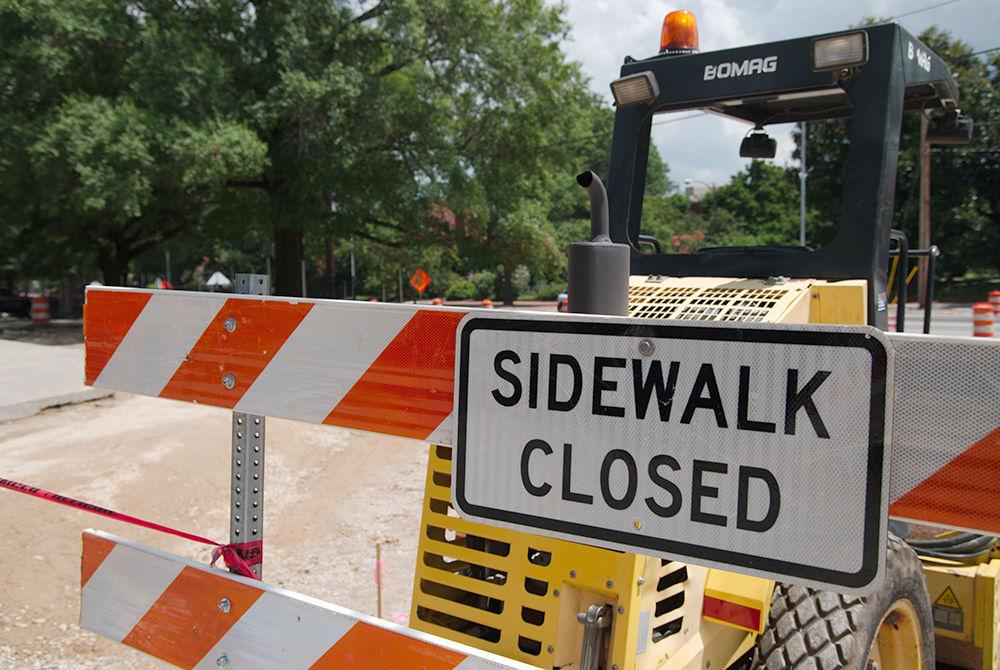NC State is currently undergoing a $60 million electrical distribution system upgrade project called “Power Forward.” The project aims to upgrade the current electrical system on Central and North Campus in four phases, with the fourth phase to be completed by 2025.
Some parts of the current distribution system are up to 60 years old and in need of an upgrade. The goal of the Power Forward project is to do just that, ensuring the campus’s power supply is defined by four words located prominently on the project website and on signs found around campus: safe, reliable, self-healing and futureproof.
Doug Morton, the associate vice chancellor for facilities, explained the meaning of some of these words as part of the project’s ultimate objective.
“It’ll be safer for the electricians; it’ll be more resilient, meaning it’ll be in protective conduits that are sealed and in manholes that are big and open so you can see what’s going on there,” Morton said. “The switches will be above ground and encased in a metal box and will also be what we call self-healing. It’s a little bit of a misnomer. It’s really self-isolating.”
This self-isolating system Morton referred to is known as a supervisory control and data acquisition (SCADA) system. SCADA systems allow users to remotely collect and process real time data, directly interact with issues through human-machine interface (HMI) software, and record any problems in a log file.
Morton says how the system will ultimately save time for electricians and create shorter power outages.
“[If] a squirrel chews through this cable, that short in the circuit, instead of taking down the whole system, it’ll take down a very small part of the system because the switches we have in there will detect where there’s a fault and the system will isolate that fault automatically,” Morton said. “Then, when we dispatch electricians to fix it, they know exactly where to go and how it’s been impacted.”
Apart from focusing on what’s currently there, Morton said the project also aims to create extra room via an empty cable conduit to accommodate the growing campus.
The Power Forward project started as the development of a master plan about 10 years ago. While the overall objective of each phase is complete, the later phases are still being further developed by the design team.
“So the chancellor helped us find the money in resources in the campus, mostly what we call facility and administrative charges on research grants.” Morton said. “We hired one design firm to show us what it would take and then one construction manager to do it.”
The project is currently in its first phase, which is set to be finished in 2023. Right now, construction is focused on establishing a duct bank, which is an underground pathway for conduit-housed cables. Jake Terrell, the project manager, provided the current location of construction that started at the Sullivan cell substation.
“We get our power, ultimately a big point of delivery from Duke Energy, we knock the voltage down, and then it goes into these cables through the duct bank,” Terrell said. “We’re proceeding down Sullivan Drive with the duct bank, and we will eventually make our way to Dan Allen, and then we will head south on Dan Allen and towards Western Boulevard.”
When asked about the effects this project will have on faculty, staff and students, both Morton and Terrell said construction detours and power outages are inevitable. However, Morton said those who are to be affected will be made aware ahead of time due to the slow moving process of digging trenches for the duct bank and replacing cable.
“It’s very slow moving,” Morton said. “You’ll see it come into your neighborhood, you’ll see the disruption and signs that talk about safety, resiliency, self-healing and futureproof. That graphic will be up, and it’ll be obvious to people that it’s coming.”
Terrell explained how the academic and business buildings will be affected and notified. He said the construction and power outages won’t be a surprise for those working in the buildings either.
“We will identify the target dates for these transitions ahead of time, we’ll coordinate with the building occupants to know what their needs are,” Terrell said. “If something is deemed absolutely critical, we will provide a generator to back it up, but even to hook up a generator is not always seamless. … There will be power outages, but we’re working to make it as seamless as possible.”
To learn more about the Power Forward Project and sign up for emails about traffic impacts, visit the project’s website. There are also questionnaires located on the website for facilities liaisons and business managers to fill out about concerns for research and projects in their buildings.













